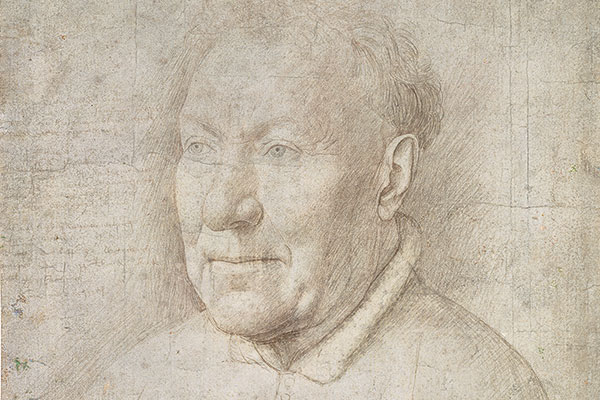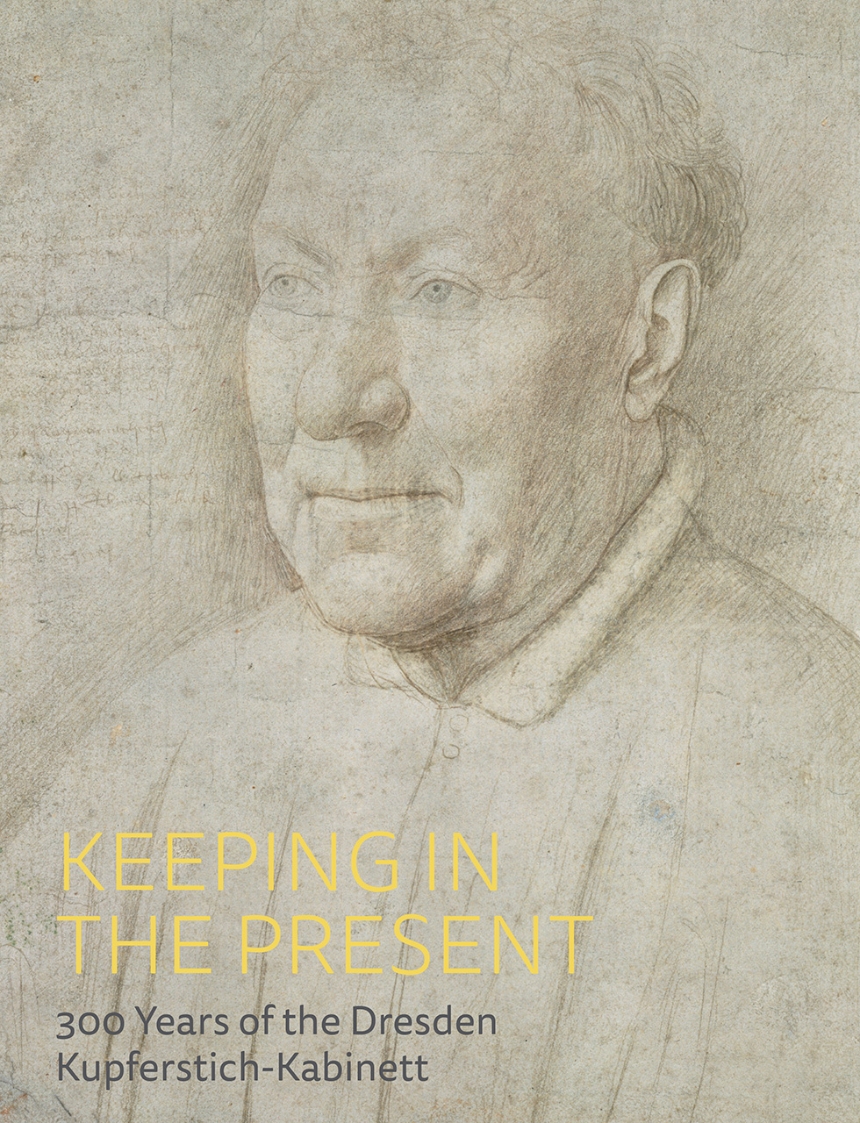The Morgan Library & Museum
October 22, 2021 through January 23, 2022
Building on the Morgan’s tradition of bringing to the American public distinguished works from outstanding institutions abroad, this exhibition focuses on the exceptional graphic collections of the Kupferstich-Kabinett, Dresden. One of the world’s oldest museums dedicated to works on paper, the Kupferstich-Kabinett was established in 1720 by Augustus II the Strong (r. 1694–1733), Elector of Saxony. Since then, the institution has expanded, weathered the vicissitudes of war, and flourished, ultimately emerging as one of the world’s preeminent repositories of drawings, prints, and photographs. The Morgan will serve as the sole American venue for this exhibition, which commemorates the 300th anniversary of the founding of the collection.
Van Eyck to Mondrian: 300 Years of Collecting in Dresden includes sixty drawings made between the fifteenth and the twentieth centuries and celebrates pivotal moments and key traditions in the history of European draftsmanship. This much-anticipated exhibition attests to the Kupferstich-Kabinett’s commitment to collecting and researching historical works, as well as its engagement with the art of the present.
Jan van Eyck (1390–1441), Portrait of an Older Man, ca. 1435–40. Silverpoint and goldpoint, 8 7/16 × 7 1/6 in. (214 × 180 mm). Kupferstich-Kabinett, Staatliche Kunstsammlungen Dresden, C 775.
Most remarkably, the Morgan’s display will feature Jan van Eyck’s (1390–1441) Portrait of an Older Man (ca. 1435–40), the only surviving drawing by the great Netherlandish Renaissance painter, which has never before traveled to the United States. A pivotal figure in Netherlandish art, Van Eyck is renowned for his skill in pictorial illusionism. Delicately modeled using densely packed lines of silverpoint, the Portrait of an Older Man is a benchmark in the history of northern European draftsmanship.
The Kupferstich-Kabinett’s strength in northern European Renaissance and Baroque drawings will be further showcased through works by Lucas Cranach the Elder, Hans Holbein the Younger, Rembrandt van Rijn, and Peter Paul Rubens, while the museum’s holdings of southern European works will be represented by Antonio Allegri da Correggio, Agnolo Bronzino, Sofonisba Anguissola, and others.
Among works produced in the nineteenth and twentieth centuries, highlights include studies by Caspar David Friedrich, Francisco Goya, Käthe Kollwitz, Gustav Klimt, Otto Dix, and Piet Mondrian.
Rembrandt’s (1606–1669) Abduction of Ganymede (ca. 1635) is among the masterpieces of Dresden’s drawings collection. Made in pen and brush and brown ink, the drawing depicts Zeus, disguised as an eagle, abducting Ganymede, a young Greek hero hailing from the city of Troy. Although Ganymede was admired for his unmatched beauty and often depicted in an erotically charged manner, Rembrandt characterizes him as a frightened, unruly toddler who squirms and screams as Zeus carries him away. The artist’s exuberant marks range from bold, zigzagging lines, which delineate the eagle’s body, to loose swirls on the right side of the composition, which do not seem to serve a specific descriptive function. The drawing was used as a preparatory study for Rembrandt’s famous painting of the same subject, which is also part of the Dresden collection.
Piet Mondrian (1872–1944), Color Design for the Salon of Ida Bienert, 1926. Opaque watercolor over graphite, 29 1/2 × 29 1/2 in. (75 × 75 cm). © 2020 Mondrian/Holtzman Trust. Kupferstich-Kabinett, Staatliche Kunstsammlungen Dresden, C 1982-151
Piet Mondrian’s (1872–1944) Color Design for the Salon of Ida Bienert (ca. 1926) is an extraordinary example of the Kupferstich-Kabinett’s rich holdings of modern drawings. Mondrian was asked to design the interior of the Damenzimmer (ladies’ salon) in the house of the Dresden art collector Ida Bienert, a driving force for modernism in the city. Although the commission was never realized, the artist’s visionary design is preserved in this monumental master plan, which combines the floor layout, wall sections, and ceiling view. To produce the plan, Mondrian extended the principles of Neo-Plasticism—a style of painting consisting of straight lines, rectangular shapes, and primary colors—into the three-dimensional interior space. Made of opaque watercolor over graphite pencil, the resultant design is composed of clearly outlined and meticulously arranged fields of vibrant color.
The exhibition is accompanied by a richly illustrated catalogue, jointly edited by Stephanie Buck, Director of the Kupferstich-Kabinett, Petra Kuhlmann-Hodick and Gudula Metze, Curators at the Kupferstich-Kabinett, and Austėja Mackelaitė, Annette and Oscar de la Renta Assistant Curator of Drawings and Prints at the Morgan. Bringing together the expertise of twenty-six authors, including many current and former staff members of the Kupferstich-Kabinett itself, this volume, makes available the most up-to-date knowledge about the collection in English for the first time.
Keeping in the Present invites us to explore eighty-four masterpieces from the oldest publicly accessible specialist collection for art on paper in the German-speaking countries. Founded in 1720, the Kupferstich-Kabinett was intended as a universal collection, open to works from all periods and countries, and the current collection holds true to that past, featuring old masters and young, unknown artists alike. Works that were contemporary and still unknown at the time of their purchase are now among the most treasured items, held in equal esteem with works that entered the collection as acknowledged masterpieces. Keeping in the Present illustrates the innovative and democratic nature of the Kupferstich-Kabinett as a place of creativity, knowledge, critical thinking, and aesthetic pleasure.
“The Morgan is proud to serve as the only American venue for Van Eyck to Mondrian: 300 Years of Collecting in Dresden,” said the Morgan Library & Museum’s Director, Colin B. Bailey. “We are immensely grateful for this long-term collaboration with our colleagues at the Kupferstich-Kabinett, Dresden, which holds one of the world’s most remarkable collections of drawings, on the occasion of its 300th anniversary. We are especially proud of the scholarly and accessible catalog, which provides a thorough history of the Dresden collection and in-depth entries on all the works included in the exhibition.”
The exhibition’s curator, Austėja Mackelaitė, the Morgan’s Annette and Oscar de la Renta Assistant Curator of Drawings and Prints, said, “This exhibition presents an unprecedented opportunity for visitors to see, firsthand, some of the most important drawings at the KupferstichKabinett and, indeed, in the European drawing tradition. The immediacy and intimacy of the medium allows us to reconstruct the mark-making of figures like Jan van Eyck, Rembrandt, and Caspar David Friedrich, inviting us to watch over the artist’s shoulder at the moment of creation.”


